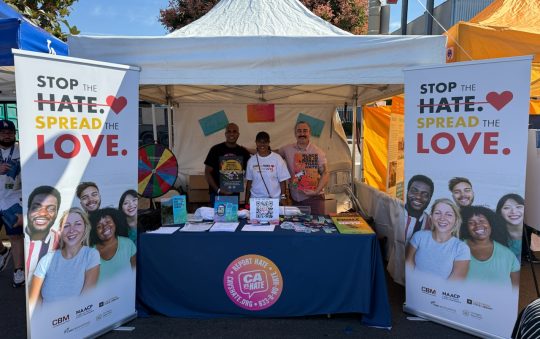This year’s wildfire season has already been out of the ordinary. About 3.3 million acres have burned across vast tracts of California, Oregon and Washington. The areas surrounding those places have also been affected by dangerous levels of smoke over the last few weeks.
Although the skies in the Bay Area are no longer orange and the air quality has improved, wildfire season is not over. Therefore, officials are advising people living close to wildfires to learn more about how air quality affects their health.
“Anytime we have any major wildfires, we often see some very high levels of air pollution,” said Dr. Jo Kay Ghosh, the Health Effects Officer at South Coast Air Quality Management District, the regulatory agency responsible for improving air quality for large areas of Los Angeles, Orange, Riverside and San Bernardino counties.
She spoke to California Black Media about how unhealthy air quality affects our health.
“Most of us have been experiencing burning eyes, or a scratchy throat, a headache, or coughing,” she said. But for some people, these high levels of particle air pollution can cause more serious health problems such as chest pain, difficulty breathing, asthma attacks and heart attack.”
Some Black communities in California are already exposed to higher levels of air pollution. A number of studies have found that that dangerous amounts of contaminants continue to poison the air in African-American and lower-income areas even as they decrease in higher-income and predominantly White areas.
Several studies have also found that wildfires are growing contributors to fine-particle pollution across the West Coast. Though the long-term health effects of exposure to fine-particle pollution and smog are well-established, there has been little research on the long-term effects of wildfire smoke, according to environmental experts.
“We know that some communities that are living near a lot of sources of air pollution like freeways or areas where there’s a lot of industrial activity, we know that these communities are often disproportionately impacted by these types of health conditions. So whenever we have this kind of poor air quality during wildfires, we definitely recommend to take precaution because these high levels of pollution can cause some serious health problems,” Ghosh said.
The U.S. Air Quality Index (AQI) measures the amount of air pollution on a scale from 0 to 500. It increases as air quality gets worse, with an AQI value over 300 representing hazardous air quality. When the AQI reaches between 101 and 150, members of sensitive groups may experience health effects, and at 151 or higher, members of the general public may experience health effects, with the risk getting higher as the AQI increases.
Ghosh recommends that community members check their air quality frequently, as conditions can change quickly. South Coast Air Quality Management District has an air quality app available on their website in both English and Spanish.
“When we have wildfire conditions, your air quality can change hour to hour and sometimes even within a few minutes, because the wind conditions really affect which direction the smoke is going. Some areas might see moderate air quality, and maybe in the next hour, it might go all the way up to unhealthy. So definitely check what the conditions are in your area at that time.”
Ghosh says there are a few preventive measures all Californians affected by poor quality of air — or who live near wildfires — can take, too, to manage their health.
“If you’re seeing that your air quality in your area is unhealthy, try to stay indoors if your doors and windows shut. If you have an air conditioner, air purifier you can run that to help filter out particles that may have gotten indoors. But you know those units can be pretty expensive. So actually, there are some instructions available to create a temporary air purifier. If you can get a box fan and a disposable air filter, you can create a temporary air filter that you can use it in a bedroom.”
The South Coast AQMD app is available at aqmd.gov/mobileapp






